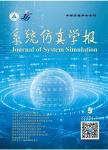Cochlear Implant
Cochlear Implant出 版 物:《系统仿真学报》 (Journal of System Simulation)
年 卷 期:2002年第14卷第1期
页 面:55-59,83页
核心收录:
学科分类:1002[医学-临床医学] 08[工学] 080401[工学-精密仪器及机械] 0804[工学-仪器科学与技术] 080402[工学-测试计量技术及仪器] 100213[医学-耳鼻咽喉科学] 10[医学]
主 题:耳蜗植入片 神经科学 感觉系统 神经响应 镫骨反射 电力探测
摘 要:In this text, the authors recall the main principles and data ruling cochlear implants. Then, a first circle of technical equipment for assistance is presented. This circle includes: device setting (DS), Electrically evoked Auditory Brainstem Responses (EABR), Neural Response Telemetry (NRT), Stapedial Reflex (SR) and Electrodogram Acquisition (EA). This first cycle becomes more and more important as children are implanted younger and younger; the amount of data available with this assistance makes necessary the use of models (implicit or explicit) to handle this information. Consequently, this field is more open than ever.1 Introduction1 1.1 About Hearing Mechanisms The hearing function in human beings is something very specific and difficult to understand because it uses the brain highest functions. Basically, we can say (figure 1) that several stages are involved [1]: It is not easy to give a unique interpretation to each one of these stages, as most of the involved processes overlap at all levels. Nevertheless, as a brief summary, let us assume that [2]: l The ear transmits the air vibrations and transforms them into electric stimuli compatible with nerve excitation, l Auditory pathways carry the electric pulses; exchanges take place, through decussation and information goes up using left and right channels. Also, specific features in the signal are detected and encoded before reaching the brain (phonetic features), l Brain interpretation matches input cues with the previously stored data into the memory and make association at different levels of language. In this text, we will come back on some ear features, mostly on the transformation of acoustical vibrations into electrical information transmitted to the brain. We will focus on the technical circle, but people fitted with a cochlear implant (CI) must be seen at all levels of language [3] and a typical team is composed of: l a E.N.T. (Ear Nose Throat) practitioner, l the surgeon performing the implantation,



